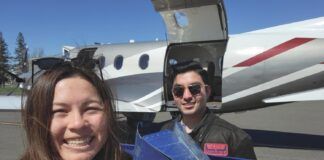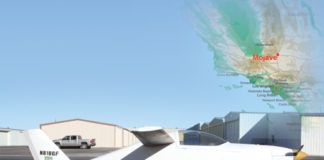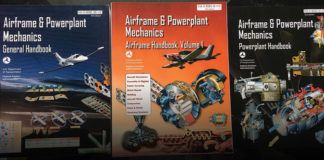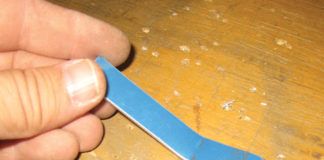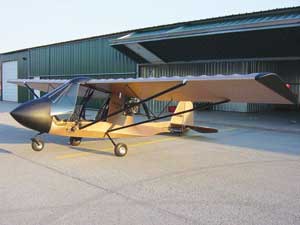 Rob Jamros Challenger II Construction began on November 3, 2008, in my basement where the airframe and fabric work occupied me during the long Upper Michigan winter. Then I moved to my hangar in May 2009 for painting, final assembly and engine break-in. On September 1, 2009, it passed inspection and was ready for the maiden flight, which took place without a hitch. What an exhilarating feeling, that first rotation in a craft built with your own hands. The Challenger flies like a dream. Sporting a Rotax 582 powerplant, it has plenty of power for winter flying on skis, and amphibious float flying for the summer. Thanks to Dave Vandenburg, my EAA tech counselor, for his guidance, and especially my wife, Barb, for her assistance and unconditional support during this project. Negaunee, Michigan |
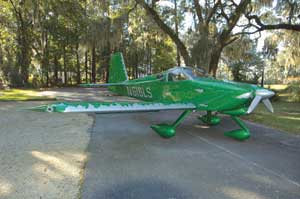 Wayne Owens RV-9A Giggles (see N number) took 2.5 years to build and almost another full year before it was painted in August 2009. The Superior roller-cam engine and Catto prop make it really smooth. After four in-flight mag failures in previous planes, this one has two electronic ignitions. Wound tight, it turned 2800 rpm and 170 knots. I wont do it again unless Im outrunning a storm. Normal stingy cruise is 2300 and 140 knots at 6 gph. It was a minor challenge to learn to land so slowly (60 knots on short final). The panel contains two Advanced Flight EFISes, a Garmin GNS 430 and a TruTrak autopilot that will fly approaches, including a missed approach, while showing my position on the geo-referenced instrument approach plate. Townsend, Georgia |
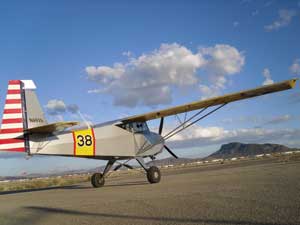 Ted Suttons Just Aircraft Highlander I took my demo flight with Gary Schmitt at Oshkosh 2004, and a friend helped me with the down payment for the show price. The kit was delivered to Aerocolor in Homedale, Idaho, that December. I lived in the hangar loft while owner John Rodgers and Jason Dilworth helped me craft the WW-II wannabe primary trainer I desired. After many months of absences from my wife, N9939 became an exciting reality. It was awarded Second Place place custom tube and fabric at Copperstate in 06. I like the 912S, Kiev prop, Icom IC-200A, Garmin GTX 320 transponder and the MGL Avionics Enigma glass instrument package. The easy folding wings and huge baggage area are hard to beat. We have 600 hours on it now and cant wait to go buzzin across the desert southwest some more! I have a lot of videos of us flying to remote locations on my YouTube channel. Parker, Arizona |
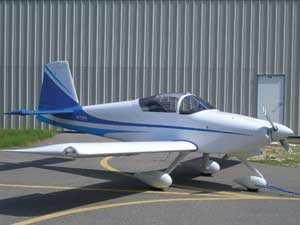 Bob Camachos RV-9A After almost three years of part-time building, I first flew my unpainted RV-9A (QB) in February 2009. It has a new Lycoming O-320 with a constant-speed prop. Avionics consist of Dynon EFIS and EMS, TruTrak autopilot and Garmin GPS 496, SL30/SL40 radios and GTX 327 transponder. I flew it for five months before finally getting it painted (too much fun). For local flights I use 50% power for 128 knots, burning only 6 gph. For cross-country 70% power yields 160 knots and 8 gph including XM weather and music. I couldn’t have completed this project without the support of my wife and the help of many friends especially Dick Chalcraft, Joe Board, Phil Bentley, John Bottensek and Jeff Stanford plus the helpful folks at Vans and on the VAF forum. Jacksonville, Florida |
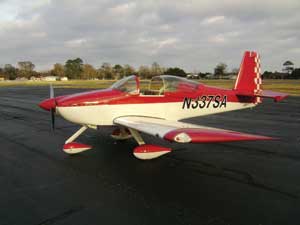 Steve Andersons RV-7A My RV-7A flew on June 7, 2009, at Lafayette Louisiana (LFT) on a calm Sunday morning. I was confident and slightly nervous as I took off, but my RV-7A flew like a dream. I humbly join a special fraternity, completing and flying a beautiful, fast, responsive, versatile time machine. Ray Fleming flew chase in his RV-7A. I now have almost 100 hours on the Hobbs, and I cant go a week without flying it. It has a 180-hp IO-360 fuel-injected Lycoming and a blended Hartzell prop bought from Vans. Weight is 1130 pounds and the panel has a Garmin SL30, GTX 327, Blue Mountain Sport, Dynon D100 and Grand Rapids EIS. I got a local upholsterer to cover Vans foam pads, and I painted the plane myself. It took four years to complete and to quote a previous builder, I built three planes and threw the first two away. I want to thank my wife, Mimi, who stood by me through ups and downs, my three children, who always brought their friends by to ask questions and marvel at the possibilities. Thanks to guru Ray Fleming for engine help, perfectionist Ken Broussard for painting tips, deep thinker Robert Beach for nailing the vinyl numbers and other tedious stuff, BFKADC and all the other people who pitched in on the crusade. Thanks to Pierre Smith for excellent transition training and interesting life stories. I love flying this plane and sometimes as I walk from the hangar, I have to go back and look at its graceful lines and pinch myself. Lafayette, Louisiana |
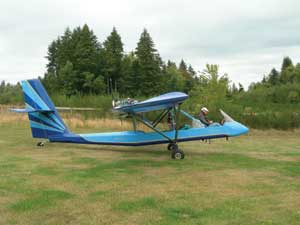 Ed and Kaye Piersons Lockwood AirCam My wife and I finally completed our Lockwood AirCam after nearly 10 years of work. Its equipped with Rotax 912S engines, MGL EFIS and I-K Technologies engine instruments. The fabric and paint were applied using Stewart Systems products. We did all the work ourselves, including the paint. The airplane flew for the first time on August 2, 2009, and performed flawlessly. We have nearly 50 hours on it so far with only minor tweaking required. Wed have put on more hours but its too cold to fly in the winter. (Lockwood, we need that canopy!) The AirCam is a spectacular performer with a 2000-fpm rate of climb solo. Vashon, Washington |
![]()
BUILDERS SHARE THEIR SUCCESSES
Submissions to Completions should include a typed, double-spaced description (a few paragraphs only-250 words maximum) of the project and the finished aircraft. Also include a good color photograph (prints or 35mm slides are acceptable) of the aircraft that we may keep. Please include a daytime phone number where we can contact you if necessary. Also indicate whether we may publish your address in case other builders would like to contact you. Send submissions to: Completions, c/o KITPLANES Magazine, 203 Argonne Ave., Suite B105, Long Beach, CA 90803. Digital submissions are also acceptable. Send text and photos to [email protected] with a subject line of Completions. Photos must be high-resolution-300 dpi at a 3 x 5 print size is the minimum requirement.

